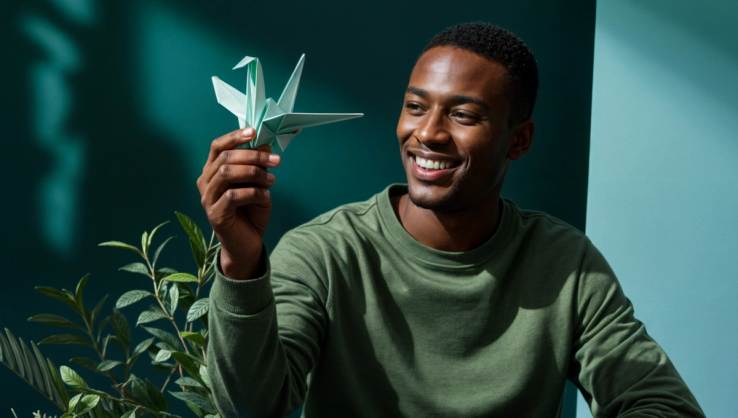
Breaking Through Marketing and Creative Barriers
Published 6 Aug, 2024

High-performing campaigns are built on close collaboration between marketers and creatives. Everyone knows this. But almost all of them run into the same barriers, from mismatched expectations to biases and different work styles. In this article, you’ll get tried-and-true methods for breaking through these barriers right from the experts.
Marketing and creative barriers affect marketers and creatives on teams of all sizes. However, with the pressure to produce more campaigns more quickly and efficiently, tensions often flare. But, you truly need teamwork to do the dreamwork.
That's why Kae Neskovic, Creative Director of Branding and Digital Ads & Social Media at Superside, joined Marie Kare, Head of Creative, Global Business Brand at Reddit and Ellen VanderWilt, Growth Marketing, ex-Adobe to talk about how marketers and creatives can find balance and break through the barriers that divide them.
Who doesn't love social love? Thank you, Tom Bradshaw for sharing this recap graphic.
Marketing vs. Creative: What’s the Difference?
Before we recap the conversation, let's talk about marketers and creatives and what makes each of them tick.
They both contribute to marketing and advertising campaigns and both have to be at least a bit collaborative when they work together. Same teams, case closed, right?
Yeah, not exactly.
The short version: Marketers run campaigns and initiatives to drive brand recognition and get more customers while the creative team is behind just about every creative asset at your organization and has a significant hand in building your brand's foundations.
Now let’s go over the long version.
Who works with whom?
Creative briefs usually go in one direction: marketing → creative. From the outside looking in, that can give the impression that the creative team works for marketers, especially in organizations that don't have a model in place for how these folks collaborate. But while marketers might call the shots when they need creative for a campaign, creative teams often hold the keys to keeping a brand authentic and consistent.
���💻 See the entire conversation.
What do they do?
Strip away all the fluff, and marketers have two primary roles: Build a strong brand and run marketing initiatives that fuel growth. Creative teams, on the other hand, plan, design and produce creative assets that support these initiatives throughout the organization—not just marketing. That means they’ve got stakes in brand, product and a lot of other areas that require visual and conceptual communication.
What do they care about most?
Marketers generally want to plan and execute killer marketing campaigns that bring in new customers, get attention from the rest of the industry, and position their organization as a leader in its field.
For creatives, hitting the motherlode with a genius concept that’s executed flawlessly is the dream. However, in-house teams, they also have to keep the business goals in mind while conjuring lightning bolt ideas and bringing them to life is their north star.
How do they know they’re doing a good job?
For marketers, ROI (return on investment) is king. They need to demonstrate that their work is bringing value to the business, whether that’s in increased brand awareness or more customers. Marketers are usually data-driven, using metrics like customer acquisition costs, conversion rates, and engagement to gauge their work.
For creatives, it’s more about how smoothly their collaboration with the rest of the business goes. How do the balance speed and efficiency? How many revisions does their work have to go through? How well are they carrying out the briefs assigned to them? And, of course, just how breathtaking is the work they’re producing?
How Marketers and Creatives Should Work Together
The ideal state for us is that everyone in marketing and creative has a voice. Everyone feels good about the work we create together and the results speak for themselves, based on how harmonious the relationship is.

While there are significant differences between creatives and marketers, in an organization that has their back, you get powerhouse campaigns with genius, high-performing creative. So what does that look like in practice?
💻 See the entire conversation.
Everyone has a voice
Creatives sometimes don’t feel like they have a lot of say on the briefs they get while marketers struggle to contribute to the overall creative vision. In an ideal world, everyone’s building something together, their voice matters, and the person sitting next to them listens to what they have to say.
Everyone feels good about their work
You know that feeling you get when your deadline’s inching closer, you look at what you’ve got so far and aren’t super thrilled with what you see? When marketers and creatives work together flawlessly, that doesn’t happen. People on both sides feel like they can bring their A-game to every project—instead of dealing with the same old problems that slow everything down. That leads to campaigns and creative work everyone is proud of.
The results speak for themselves
A team made up of people who feel heard and love the work they’re doing is going to produce the kind of stuff that gets nominated for awards. Hearing that pin-drop silence in the room after a pitch, followed by a sort of breathless “I love it” from stakeholders is the best feeling in the world, and the ideal team-up of marketing and creative will create that every time.
The Barriers Between Marketing and Creative Teams
Now we all know closer, smoother collaboration between marketers and creatives leads to better results for everyone. So why is it so hard to get this right?
Differing Expectations
Creatives need lead time. Marketers often don’t have lead time because their higher-ups are moving quickly and (sometimes) reactively to the market.

Mismatched expectations are the root of all disappointment, and they’re all too common here. Marketers often work on tight deadlines, pressured by leaders who want to quickly test new ideas—or see sales numbers go up right now. Unfortunately, that doesn’t mesh with what creatives need to do their job.
Creatives need time to come up with ideas, test them out, play around with them, and deliver an awesome final product. When it seems like they’re moving too slowly, marketers can get impatient
That’s not to mention the briefs. Marketers can sometimes throw out briefs that are put together a little too quickly, giving creatives no real good place to start. That leads to a final product that doesn’t match anyone’s expectations.
Mistakes
Mistakes can happen in just about any project, and creative work is no exception. Unclear expectations, overly tight timelines, and mismatched goals can all lead to a bunch of mistakes for marketers and creatives.
But there’s one mistake that’s a serious barrier to these two camps working together: listening. Or, rather, a lack thereof.
Creatives and marketers alike can get a bit set in their ways, preventing them from truly listening to what matters for the other side, what’s at the root cause of an issue, and what can be done to fix things.
Biases and mental barriers
Mentally, both marketers and creatives create these barriers based on our perceptions of the other team, what they’re up to, and what their goals are.

Bias can get us all in a lot of trouble. Because marketers and creatives tend to work together extensively, there’s a lot of time for misunderstandings to mount and assumptions to build. Without listening and empathy, both camps start to base the way they work on these assumptions, which can turn even the simplest projects into nightmares.
So what do you do?
How to Break Through Marketing and Creative Barriers
While the problems marketers and creatives run into when they work together can seem insurmountable, the fixes are simple—just not always easy. It just takes a little extra work, some goodwill, and a positive outlook.
Recognizing each other's strengths
Trust the expertise of your partners.

Marketing and creative are very different teams. That can either be a source of weakness or a source of strength. Trying to force the other team to fit in a box just because it makes sense for you won’t help your projects. But when you see a creative partner’s strength as…well…a strength, you can do great things. You can hand off the parts of your process they can really nail. You can unlock new creative opportunities that would have been completely missed without that recognition.
Working with empathy
When you’re looking at someone’s work, things look easy. But almost nothing that looks easy actually is, right? They’re like a magician. They’ve practiced so many hours to do that sleight of hand.

When collaboration between marketing and creative hits troubled water, it’s usually because there’s not a lot of listening going on. But to reach that ideal collaborative state, you need to go a step further. That’s where empathy comes in.
Do you know why a creative brief isn’t as fleshed out as you would like? Or why there’s a version of a particular asset that’s not as strong as the others? It’s easy to just look at surface-level issues, but teams who work with empathy dig deeper, find the root cause of an issue, and work to understand what’s happening.
When your collaborators feel like you’ll take the time to understand them, they’ll give you their best—and help you achieve yours.
Remember you’re on the same team
No one understands what you do better than you, right? You are the chocolate. But, what if chocolate met peanut butter? Pair the marketing peanut butter with your creative chocolate, and you form a delicious candy that cannot be resisted.

Even though creatives and marketers might be on different teams on the org chart, when you’re working together on a project, you’re on the same team. You’re facing problems together, answering stakeholders as a unit, and you share the same goals, even if it feels like you might be at odds at times. Your leadership needs to reflect this, as well.
💻 See the entire conversation.
Bring everyone together
Marketing and creative can do some great things together, even if most organizations haven’t really cracked the nut on that collaboration yet. Whether you’re a marketer or a creative, treat your fellows with empathy, recognize their strengths, and remember that you’re on the same team. By putting a little extra intentionality into your collaboration, you can crash through the marketing and creative barriers keeping you back.
Need a Little Help Harmonizing?
In the end, both marketers and creatives want to do great work. The struggle is accessing the bandwidth needed to produce all the creative assets. Superside bridges the gap between marketing and creative teams, making it easier for everyone to get the design they need.
Your dedicated creative project manager works with you, learning your needs and your brand and pulling from a global network of the top 1% of traditional and AI-powered creative talent to help bring your ideas to life. We're committed to the quality we provide and the relationships we forge. To learn more, book a call below.













